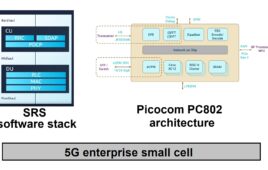The Federal Communications Commission on Thursday unanimously voted to open nearly 11 GHz of high-frequency spectrum for 5G.
The ruling will open up a total of 10.85 GHz of spectrum above 24 GHz, a chunk FCC Chairman Tom Wheeler said was more than four times larger than the total amount of licensed spectrum currently available for mobile services.
“I do believe that this is one of, if not the most important decision this agency will make this year,” Wheeler said before the vote. “By becoming the first nation to identify high band spectrum, the United States is ushering in the 5G era of high-capacity, high-speed, low latency wireless networks. By not getting involved in the technologies that will use the spectrum, we’re turning loose the incredible innovators of this country.”
The newly freed spectrum includes 3.85 GHz of licensed spectrum from 27.5-28.35 GHz and 37-40 GHz as well as 7 GHz of unlicensed spectrum from 64-71 GHz.
Verizon, which was among the major carriers advocating for open spectrum in the 28 GHz, 37 GHz and 39 GHz bands ahead of its planned commercial 5G launch next year, praised the decision as one that will “help ensure that the U.S. maintains its leadership position in wireless communications.”
AT&T Vice President of Federal Regulatory Joan Marsh similarly praised the decision, calling it a “big down payment on the next generation of wireless innovation in the United States.”
“The Order, which is the result of months of advocacy, reflects regulatory compromises designed to permit new 5G services while accommodating the business plans of incumbent licensees,” Marsh said in a statement. “A careful review of the Order will be necessary to understand the balance struck between the competing interests, but we believe that the FCC’s actions today will provide the clarity needed to move forward with confidence with 5G trials and development, ensuring continued U.S. leadership in wireless innovation and services.”
The Telecommunications Industry Association (TIA), Competitive Carriers of America, CTIA, Qualcomm and Ev Ehrlich, former undersecretary of commerce for the Clinton Administration, all also voiced support for the decision.
But not everyone is happy with the new rules.
Michael Calabrese of New America’s Open Technology Institute called the order “extremely shortsighted” and warned the rules leave too much wiggle room.
“Because the big carriers will use these bands only in city centers and high-traffic indoor venues, exclusive and indefinite licenses over large geographic areas is a recipe for leaving these millimeter bands vacant in more than 95 percent of the country and millions of venues,” Calabrese said. “This creates a risk of foreclosure and warehousing that would undermine both competition and innovation. Most important is to allow opportunistic public access to all unused spectrum in these bands and to ensure that the 600 megahertz set aside for sharing with federal incumbents is not auctioned, but open for use by any institution or individual.”
Verizon, AT&T and T-Mobile have already begun testing 5G technologies on 28 GHz spectrum. In February, AT&T applied for permission to conduct tests at 28 GHz in Austin, Texas. In March, Verizon and T-Mobile both sought permission for experimental operations at 28 GHz. T-Mobile also filed for permission to conduct tests in the 37 GHz and 39 GHz bands.



